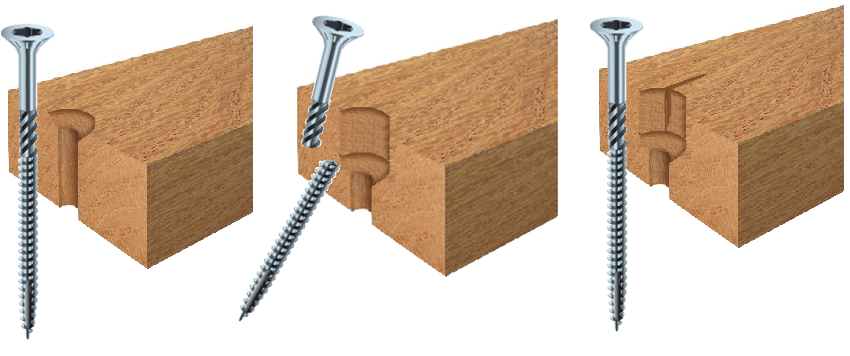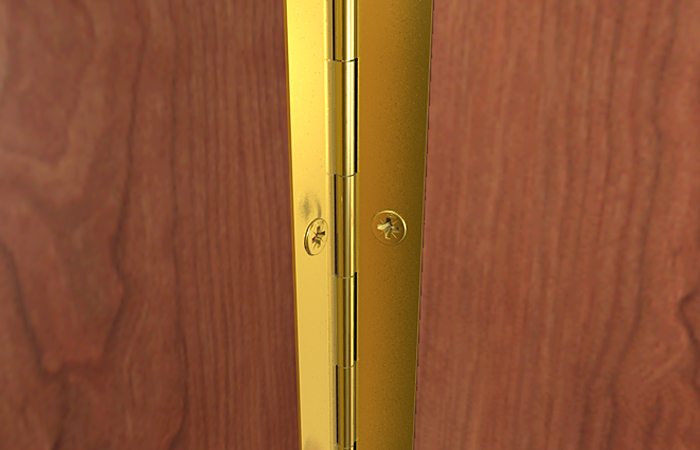BASIC WOOD SCREWS MECHANICS
CLAMPING FORCE
The three below designs demonstrate differences in clamping force between the parts of the wood:

The picture on the left has clamping force since the thread of the screw is only in the lower part of word. The image in the middle shows a thicker top part with no clamping force, due to the thread grip in both parts of wood. On the right is the same top thickness, but there is a predrilled hole only in this top part; because the thread has no grip in the top part this way, clamping force exists. To predict the clamping length of the screws, the measurements of the unthreaded shaft and the milling ribs should be added. Another option is to subtract the threaded area from the total length, which results in the clamping length.
SPLITTING
If wood screws are used without predrilling, most types of wood tend to split along the grain of the wood. Without predrilled space for the screw to fit inside of the wood, the screw pushes aside the wood to create this space. The sideways tension (radial forces) created by the screw in this way is too high for the wood, and thus it splits open. Naturally, thicker screws create higher tension than thinner ones, so the risk of splitting increases as the screw thickness increases.
Traditional wood screws create greater tension than chipboard screws, which is due to the differences in thread core thickness and the sharpness of the thread. Wood screws like Maxxfast or Heco Topix mill a large part of the space they need due to their moon-cut point and the milling ribs. Consequently, the tension in the wood and splitting are minimized, regardless of the screw thickness.
Always be aware that the splitting of wood or breaking of the screw might still occur if the head of the wood screw is driven in too deep.

METAL TO WOOD ASSEMBLY
When hard parts, like metal, are attached to wood using wood screws, it is crucial that the screws are driven in carefully.
As the screw thread moves forward into the wood with a distance of one pitch per rotation, the screw very quickly builds up a pulling force as soon as the screw head meets the material surface. If too much torque is applied after the head reaches the material surface, failure of the wood or screw can result.
